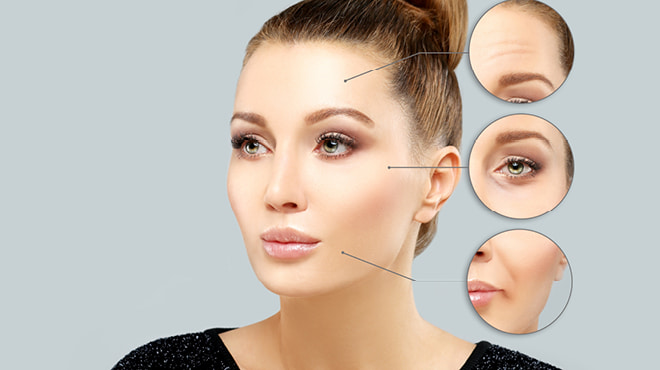Recent Posts
7 common questions about upper eyelid surgery

If you're bothered by drooping eyelids or are losing your peripheral range of vision, upper eyelid surgery may be a solution for you.
Here are answers to 7 questions about this common surgical procedure.
1. Why do droopy eyelids develop?
As you age, the skin along your eyelid can stretch and the muscles that raise the eyelid weaken over time. For some, droopy eyelids can result from an injury or disease, such as diabetes, Horner syndrome, Myasthenia gravis, stoke, tumor and swelling in the eyelid. Droopy upper eyelids can occur to one or both of your eyelids.
2. What are the symptoms of droopy eyelids?
A common symptom of droopy eyes is a loss of the usual field of vision, especially the upper and outer parts of your field of vision. Usually, this change occurs gradually, and you may start to have trouble driving, experience blurred vision while watching TV, frequently waking into objects or be unaware of objects on one side of your vision.
An optometrist or ophthalmologist can test your visual field and determine if you are experiencing visual defects due to the shape or position of the eyelids.
Other symptoms could be extremely dry or watery eyes or people telling you that you look tired due to baggy or sagging appearance of your eyelids.
3. Can young children have droopy eyelids?
Babies can be born with droopy eyelids, which also is called congenital ptosis. The child may lift his or her eyebrows or tilt the head back to be able to see.
Droopy eyelids that completely or partially block a child's vision could result in permanent vision loss. An ophthalmologist should evaluate this. Surgery on young children to correct droopy eyelids is generally performed in the preschool years.
4. How is eyelid surgery performed?
Blepharoplasty is the type of surgery that repairs droopy eyelids. An ophthalmologist or a plastic and reconstructive surgeon can perform this surgery.
During the surgery, the surgeon makes an incision in the natural fold of your eye, and removes excess skin, muscle and possibly fat along your upper eye lid. The incision is hidden in the eyelid's natural crease.
The procedure is performed as a same-day surgery, which means your recovery is done comfortably at home.
Blepharoplasty can reduce or eliminate visual field problems, in addition to making the eyes appear younger and more alert.
5. What are the risks for an eyelid surgery?
Talk to your surgeon about the surgical risks, and weigh the benefits and risks, to help you decide is the procedure is right for you. As with any surgery, there are possible risks.
Risks include:
- Infection and bleeding
- Dry, irritated eyes
- Difficulty closing your eyes or other eyelid problems
- Noticeable scarring
- Injury to eye muscles
- Skin discoloration
- The need for a follow-up surgery
- Temporarily blurred vision or, rarely, loss of eyesight
- Risks associated with surgery in general, including reaction to anesthesia and blood clots
6. When should you expect results?
After surgery, you may experience blurred vision from the lubricating ointment applied to your eyes, watering eyes, light sensitively, double vision, or some pain or discomfort. Bruising and swelling will occur. This will generally subside in 10 to 14 days.
Scars from the surgical cuts may take months to fade. During this time, it's important to protect your delicate eyelid skin from too much sun exposure.
Most people are satisfied with the results and see an improvement in their visual field. Results for some people may last a lifetime.
7. Is eyelid surgery covered by insurance?
Insurance coverage depends on whether the surgery repairs a condition that impairs your vision. If you have the surgery only to improve your appearance, insurance won't cover the cost.
Upper eyelid surgery is a common procedure to restore a more open appearance to the eyes and restore visual field in men and women. Talk with your primary care provider or ophthalmologist if you are concerned about excess eyelid skin or your visual field.
Learn more:
Watch this video about what to expect with an eyelid lift:
- Read how eyelid surgery gave patient a better view.
- Learn more about eye health.
Michael Garvey, M.D., is an ophthalmologist in La Crosse and Onalaska, Wisconsin.




